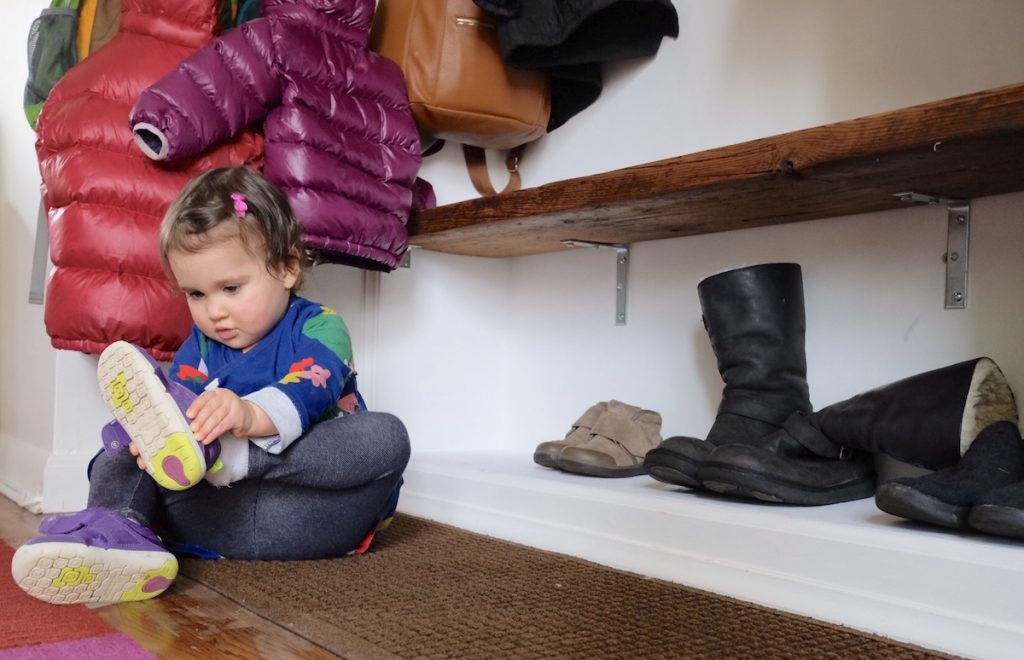
This post is a part of a series called “Peek Inside My Minimalism.” In this series, I show you a glimpse of what minimalism really looks like in my life. This post contains affiliate links.
Every house has a drop zone. Usually it’s right inside the door. It’s the space that the shoes, mail, jackets, backpacks, and all else lands upon entry. Often this is the mudroom or entryway. There’s a good chance it will end up as the clutter catch-all spot.
I call it the drop zone. If you aren’t careful, it can quickly turn to chaos.
We have eliminated the chaos by simplifying our drop zone to include only items we are actively using.
The first step in taming this chaos was to turn this into an active space, as opposed to a storage space. That means every single item within it is used on a daily (or sometimes weekly) basis. By scaling back to only include actively used items, everything now has a place.
This way, upon entering the house we (kids included) can easily put things away exactly where they go.
Active Space vs. Storage Space
Often spaces in our homes become a combination of an active space and a storage space. This happens because the things we use frequently get mixed up among the items that we rarely use. This is when things start to get overwhelming.
This principle is at the core of minimalism in the home: remove the excess to focus on the things you really love and use everyday.
An example of this principle is my master bedroom closet. Before I switched to a small wardrobe, my closet was a mixed use space: it was a combination of both active and storage space. That means I had my frequently-worn clothes mixed up with my rarely-worn clothes. I had a very hard time making outfits and often couldn’t find what I needed. When I got rid of all the clothes I didn’t wear, I changed my closet to an active space. I do have some clothes that I put away in a storage space, but I am careful to make sure that the actual closet stays an active space–which makes my daily life easier.
Back to our drop zone. We have recently renovated this space to be more efficient for our family. When we moved into our new home this summer, the drop zone was a built in book shelf. Although this may have been functional for the previous owners, it was a mess for our family.
With little effort and cost, we have transformed this into a simple space that works effectively for us (props to my husband for taking on this task). The space is composed of two elements: one equipped to organize the outerwear and gear while the other to organize the paper and keys (think: mini vertical-office).
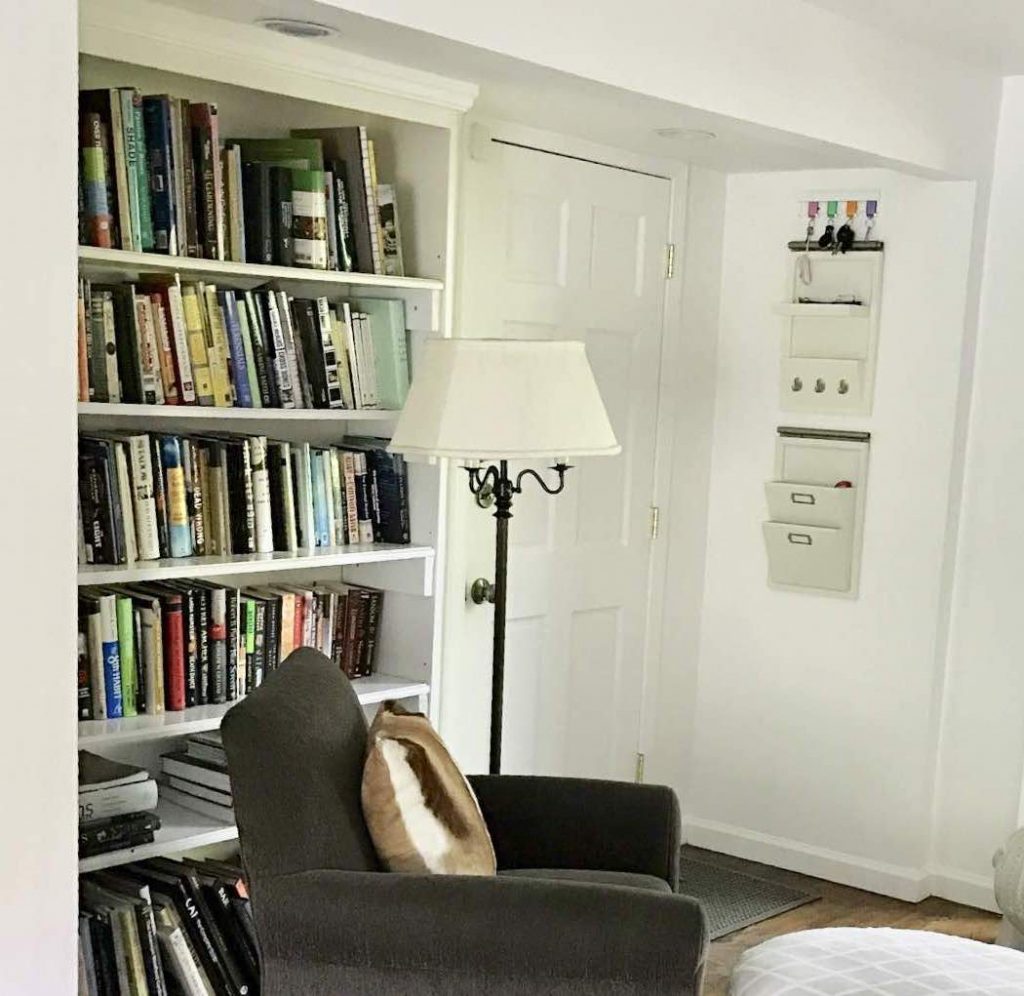
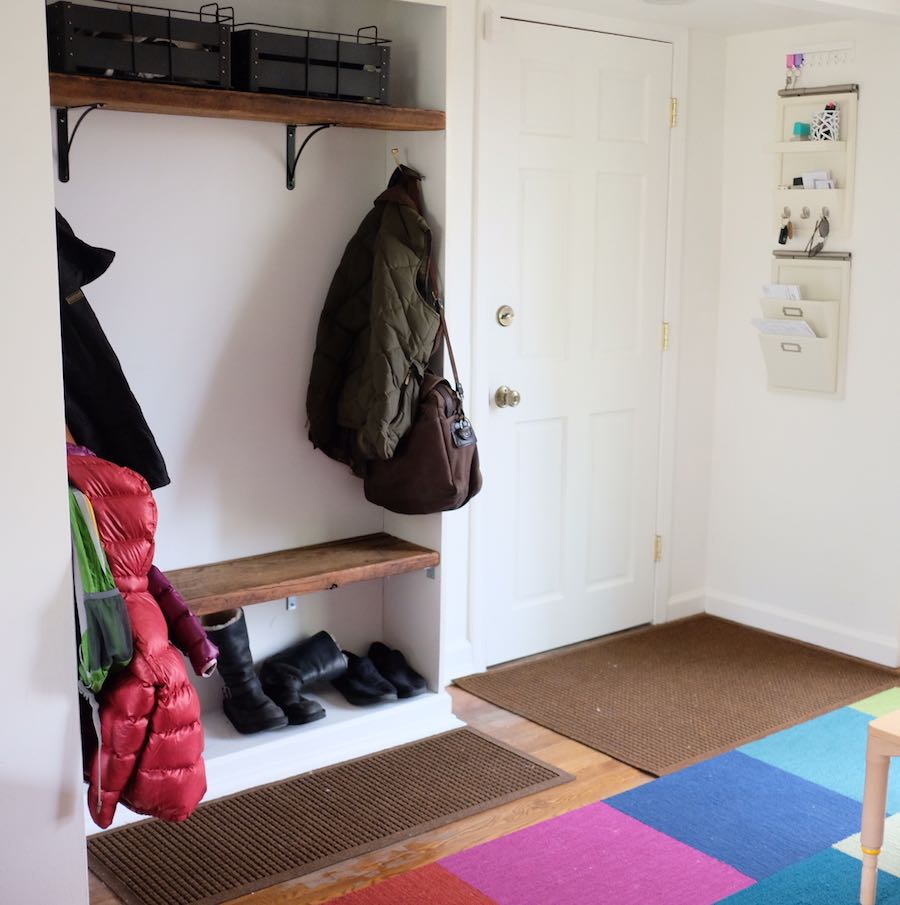
Office Drop Zone
When we minimize the horizontal space in our homes, we can eliminate the piles of clutter. So rather than adding a desk and table space to this room, we stick with a mini vertical office. You might be familiar with vertical gardens–this is the same idea.
We utilize the Daily System by Pottery Barn in this space. This is a build-your-own system and we have two pieces: The Office Organizer and the Letter Bin.
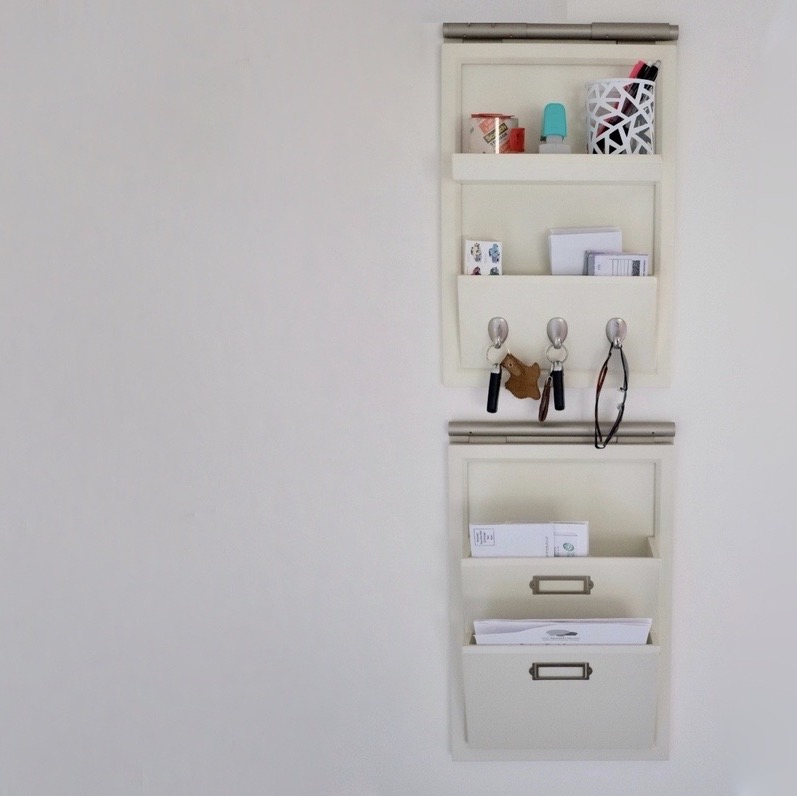
The Office Organizer is on top and has a shelf that serves as a mini desk. The shelf holds a cup with pens, our return address stamp, and packing tape. Underneath, there are three compartments. One is used for stamps, and the larger pocket for a check book and blank envelopes. There are also hooks to hang the keys.
Under the Office Organizer is the Letter Bin. The Letter Bin has two spots: one is for unopened mail and the other for mail which needs to be attended to in the coming days (think bills and other items that require a response via snail mail). All other mail hits the recycling immediately.
Gear Drop Zone
The gear drop zone consists of two reclaimed wood boards that are hung inside of the old built-ins (one to hold baskets, the other used as a bench). There are four hooks: one for each person. Two high-up for the grown-ups, two down-low for the kids.
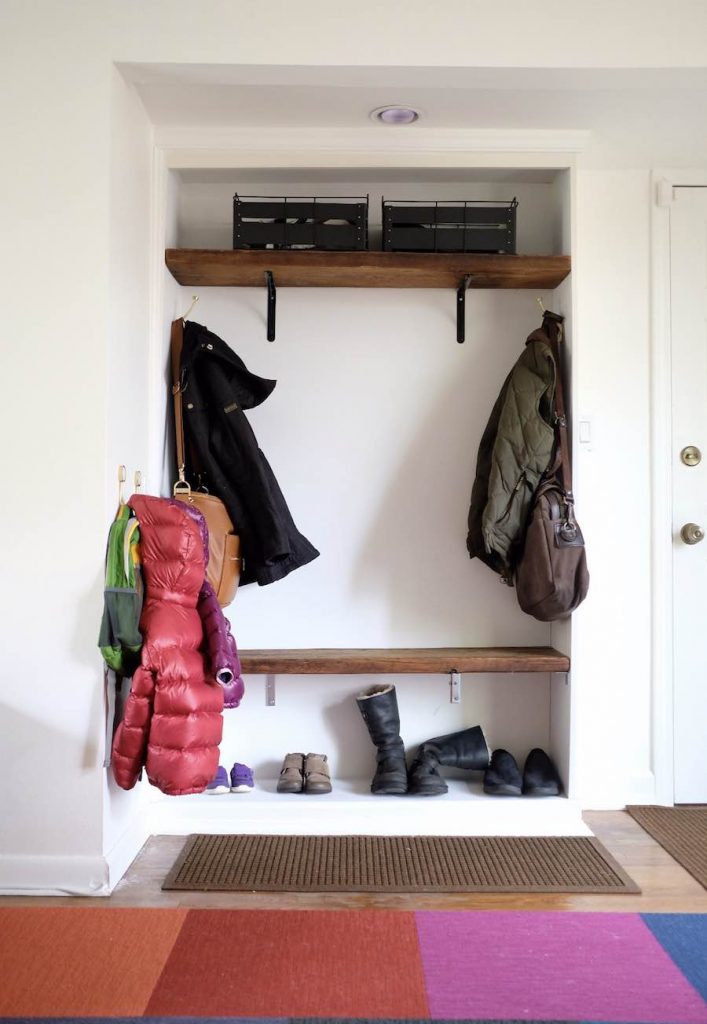
Each person uses their hook to hang a jacket and bag. Since we are minimalists, we don’t use a lot of jackets and bags–we stick with the same ones almost everyday. This makes it extra easy to simplify this space. We all have high quality items that are versatile and durable–which makes us all happy to wear them frequently.
[accordion title=”Click here to see exactly what gear we are wearing the most this season“]
- Me: Barbour Arrow Jacket//Uggs//Fawn Design Bag
- Husband: Barbour Vest//All Birds Loungers//Filson Original Briefcase
- Preschool Son: Patagonia Hooded Down Sweater Jacket//Bogs Waterproof Sneaker//Mountaintop Backpack
- Toddler Daughter: Patagonia Hooded Down Sweater Jacket//Stride Rite Casey Sneakers//The Northface Sprout Backpack
[/accordion]
We have made a huge effort to create a home that is child-friendly, rather than child-proof. As a part of this, I am conscious to be sure I am creating spaces that my children can be empowered to take care of their belongings and clean up easily. Having the hooks down low allows them to hang up their jackets and backpacks each day with ease.
The bins on the top of the space are for seasonal items. In the winter they hold one pair of gloves and a hat for each person in the family. In the summer, they hold things such as sunscreen and bug spray.
On the floor we have Waterhog mats from L.L. Bean. These mats soak up 1.5 gallons of liquid per square yard. Therefore, they are adept at handling muddy shoes and boots. These are the only floor mats I will ever buy again–however they have held up so well (+5 years) that I doubt I will need to buy mats again anytime soon. We have both a rectangle version and then a proper boot mat in this space.
When it comes to shoes, we each aim to have only one pair at a time on the bottom shelf. We generally can stick with it–but occasionally we tend to add a few pairs. We also keep our slippers here as well, so we can trade off our shoes for our slippers when entering the house.
We do have a coat closet where we store extra coats that are out of season or for special use (re: parkas, ski jackets, lightweight jackets). Likewise, we each store other shoes in our own respective closets.
